

San Xavier del Bac
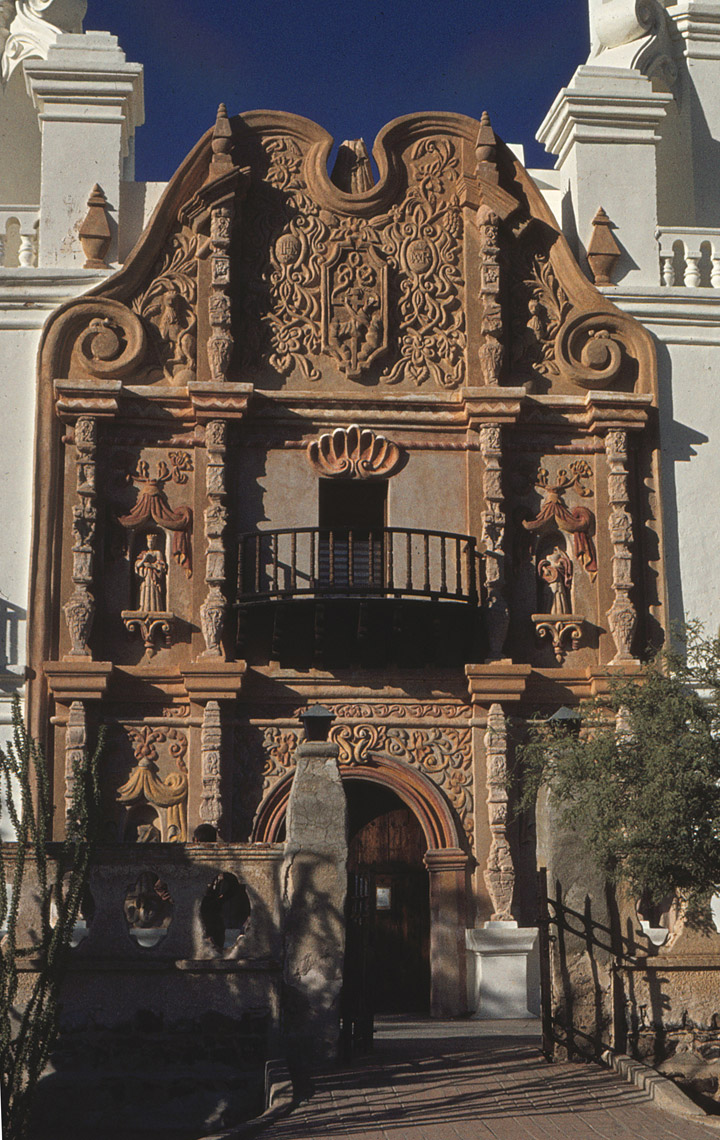
Mission San Xavier del Bac is a historic Spanish Catholic mission located about 10 miles (16 km) south of downtown Tucson, Arizona on the Tohono O'odham San Xavier Indian Reservation. Named for a pioneering Christian missionary and co-founder of the Society of Jesus (Jesuit Order), the Mission is also known as the "place where the water appears" as the Santa Cruz River (which runs underground) surfaces nearby. The Mission is situated in the center of a centuries-old Indian settlement, the Tohono O'odham (formerly known as Papago), located along the banks of the Santa Cruz River.
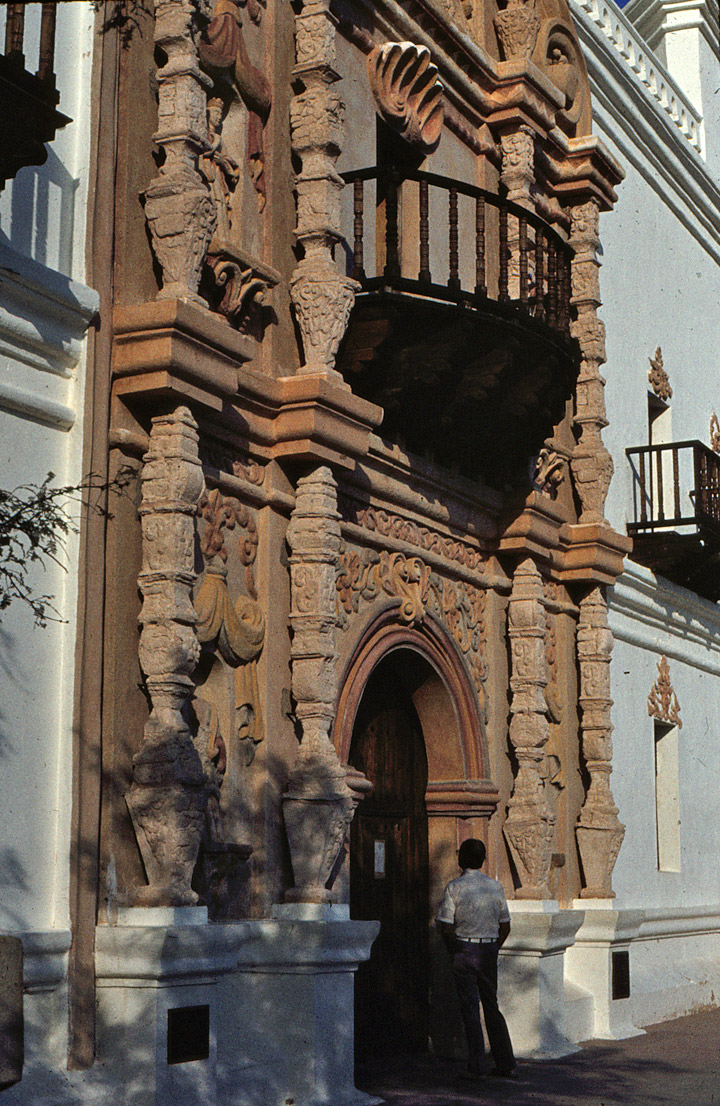
The site was founded in 1699 by the Jesuit missionary Eusebio Francisco Kino,
who often visited and preached in the area. The original mission church, located
about two miles away, was vulnerable to Apache attacks who finally destroyed it
in about 1770. Charles III of Spain banned all Jesuits from Spanish lands in the
Americas in 1767 because of his distrust of the Jesuits. From this time on, San
Xavier mission was led by the more pliable and "reliable" Franciscans. The
present building was constructed under the direction of Franciscan Fathers Juan
Bautista Velderrain and Juan Bautista Llorenz mainly with native labor working
from 1783-1797 with a loan of 7,000 pesos and serves the Catholics of the San
Xavier District of Tohono O'odham Nation. Alone of the three Sonoran Desert
missions built in Arizona, San Xavier is still actively served by Franciscans,
and still serves the Native community by which it was built. The San Xavier
church and its Indian converts were originally protected from marauding Apache
by the presidio of Tucson established in 1775. The other Sonoran Desert mission
in Arizona is now part of the Tumacacori National Historic Park and is inactive.
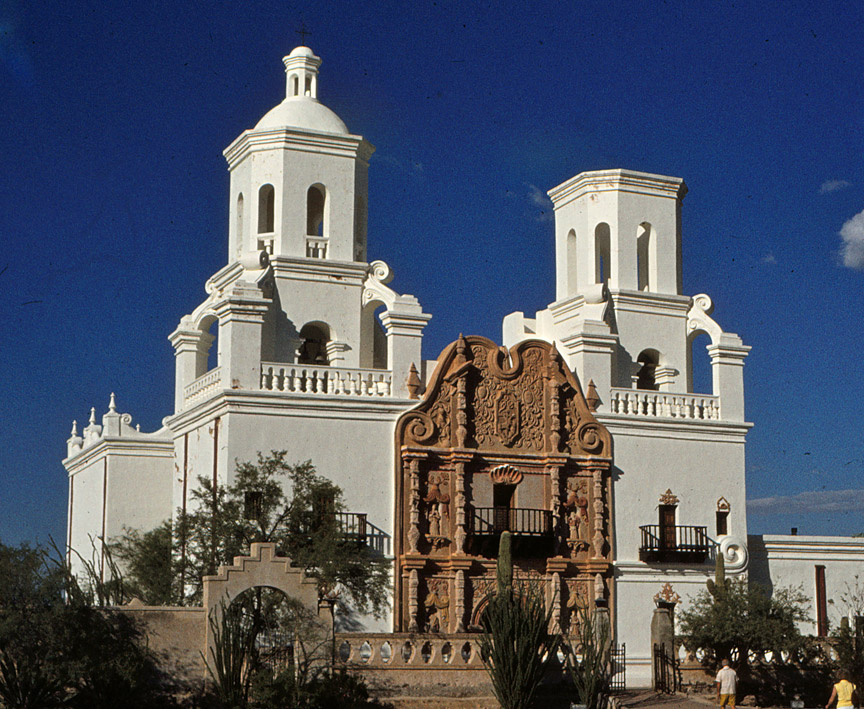
Outside, San Xavier has a white, Moorish-inspired design, elegant and simple,
with an ornately decorated entrance. No record of the architect, builders,
craftsmen and artisans responsible for creating and decorating it are known.
Most of the labor was almost certainly provided by the local Indians and many
believe they provided most or all of the artisans as well. Visitors entering the
massive, carved mesquite-wood doors of San Xavier are often struck by the
coolness of the interior, and the dazzling colors of the paintings carvings,
frescoes and statues. The interior is richly decorated with ornaments showing a
mixture of New Spain and Native American artistic motifs.
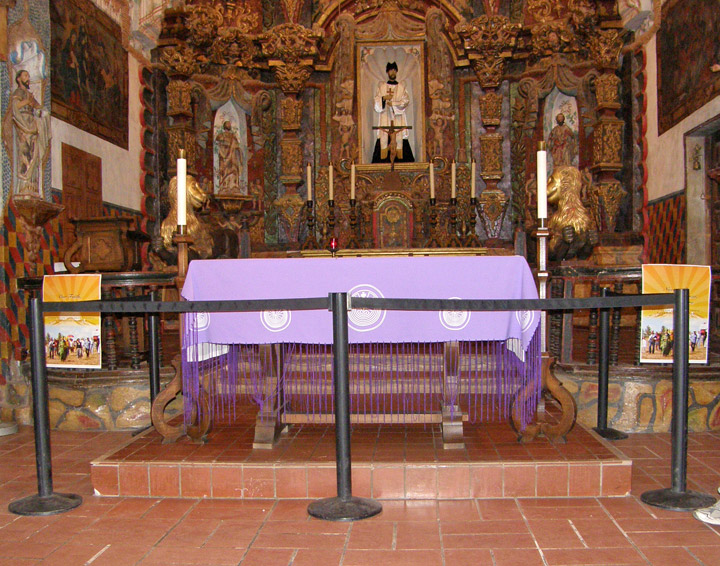
interior of San Xavier del Bac
The floor plan of the church resembles the classic Latin cross. The main aisle is separated from the sanctuary by the transept or cross aisle, with chapels at either end. The dome above the transept is 52 feet high supported by arches and squinches. At least three different artists painted the artwork inside the church. It is considered by some to be the finest example of Spanish mission architecture in the United States.
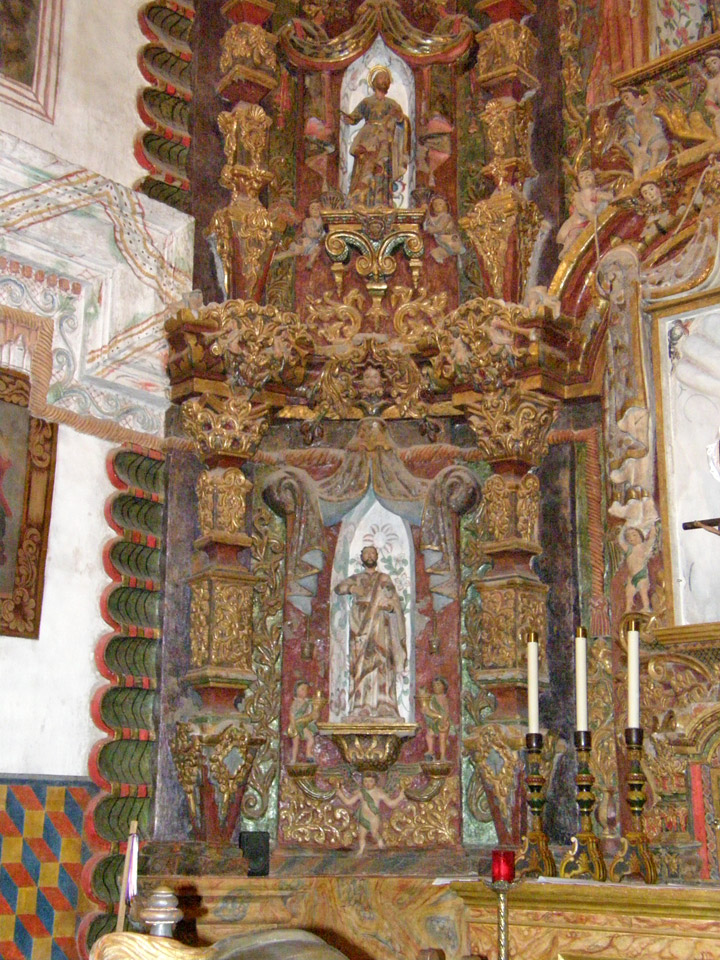
one of the restored altars
More Photos of the Restoration
Not much appears to have been written about the Mission from 1797 to 1828. In 1822, it fell under the jurisdiction of the newly independent Mexican government and the Catholic Diocese of Sonora Mexico. In 1828, the Mexican government banned all Spanish-born priests and the priest serving at San Xavier was sent home to Spain; San Xavier was left vacant. From 1828-1858, the vacant church began to decay and local Indians, concerned about their church, started preserving what they could. In 1853, the church was brought under U.S. jurisdiction when the surrounding territory was bought in the Gadsen Purchase.

the church in 1853
The vacant and decaying church was re-opened, in 1859, when the U.S.-based Santa
Fe Diocese added Arizona to its jurisdiction. The Bishop for the Santa Fe
Diocese ordered repairs to be made with Diocese money and a priest was assigned
to serve at San Xavier.
The mission was declared a National Historic Landmark in 1960.
Text from Wikipedia

Father Kino on horseback
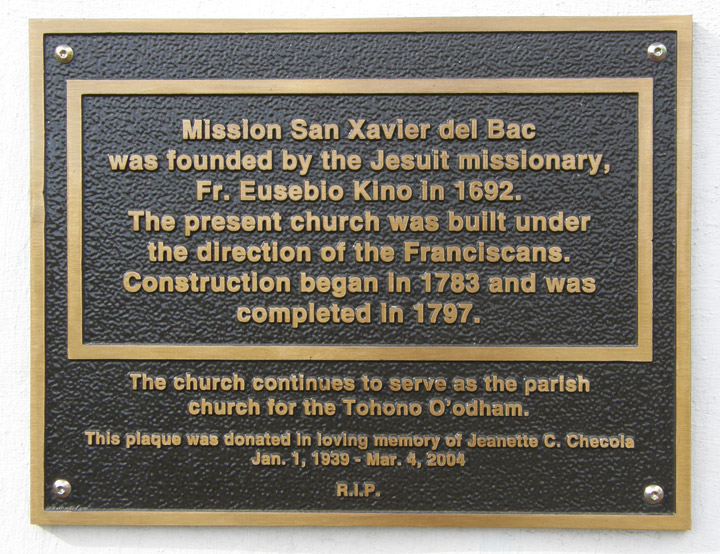

wooden effigy of San Xavier, after whom the mission is named
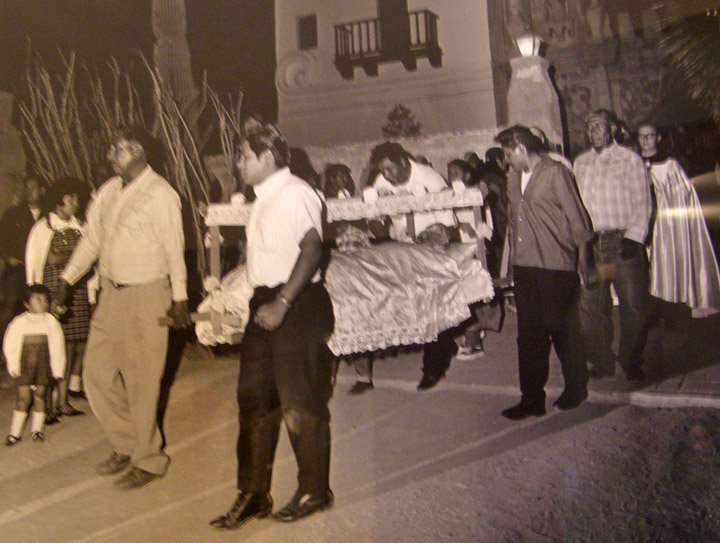
which was often carried in procession
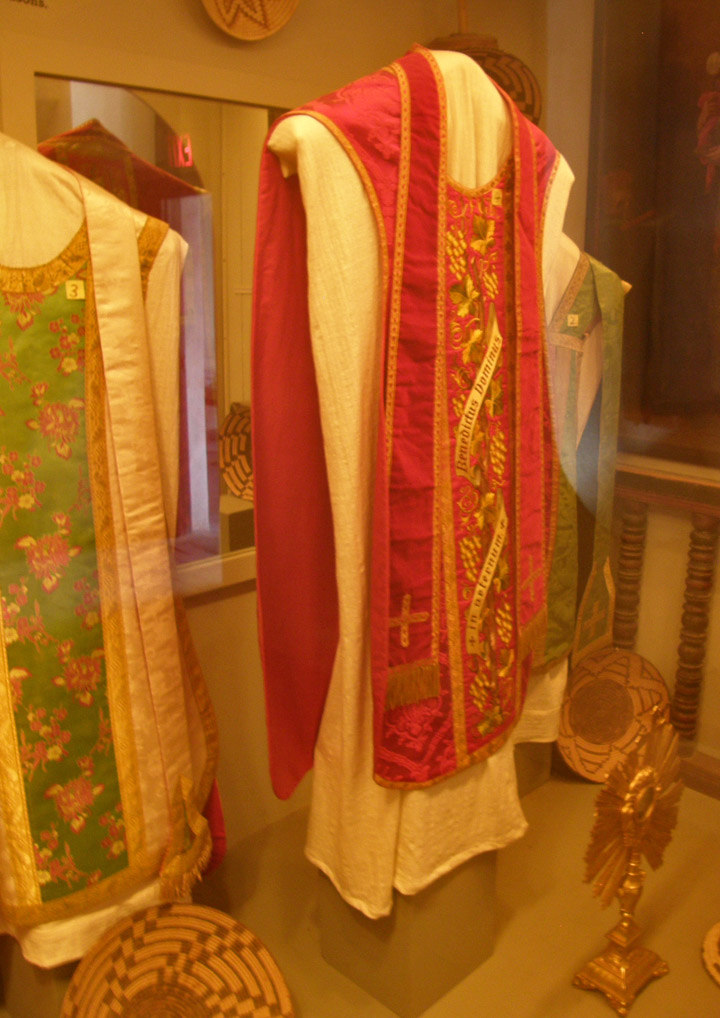
clerical robes
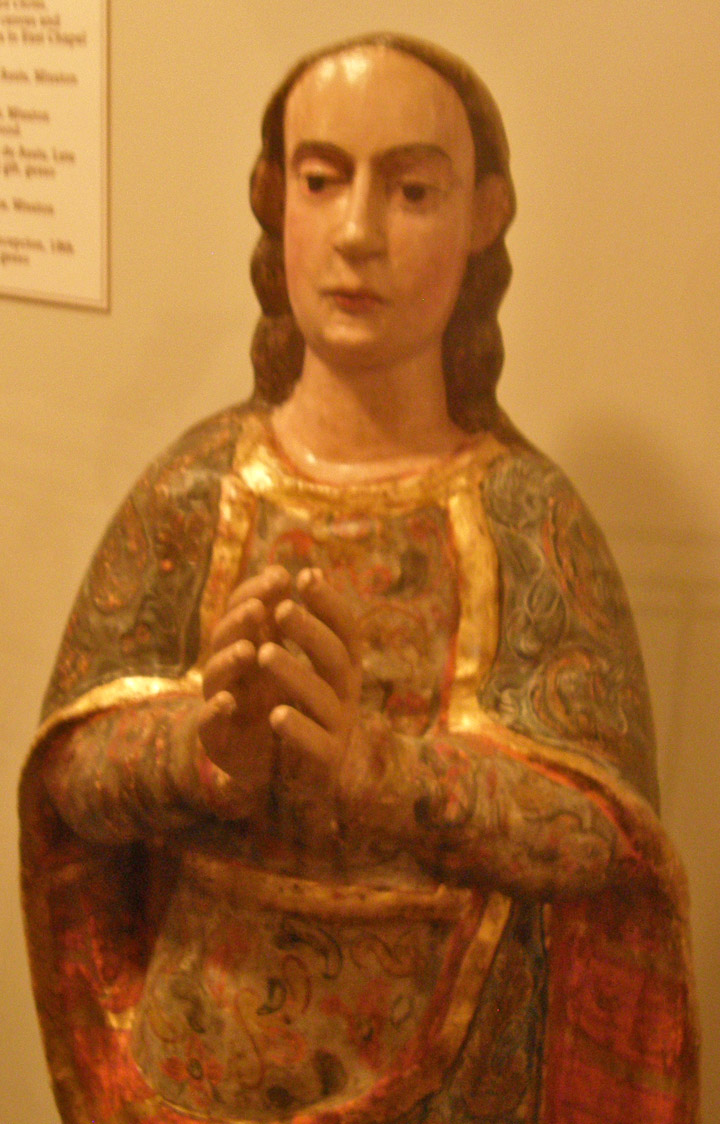
Photos from 2008
during the restoration of the left tower

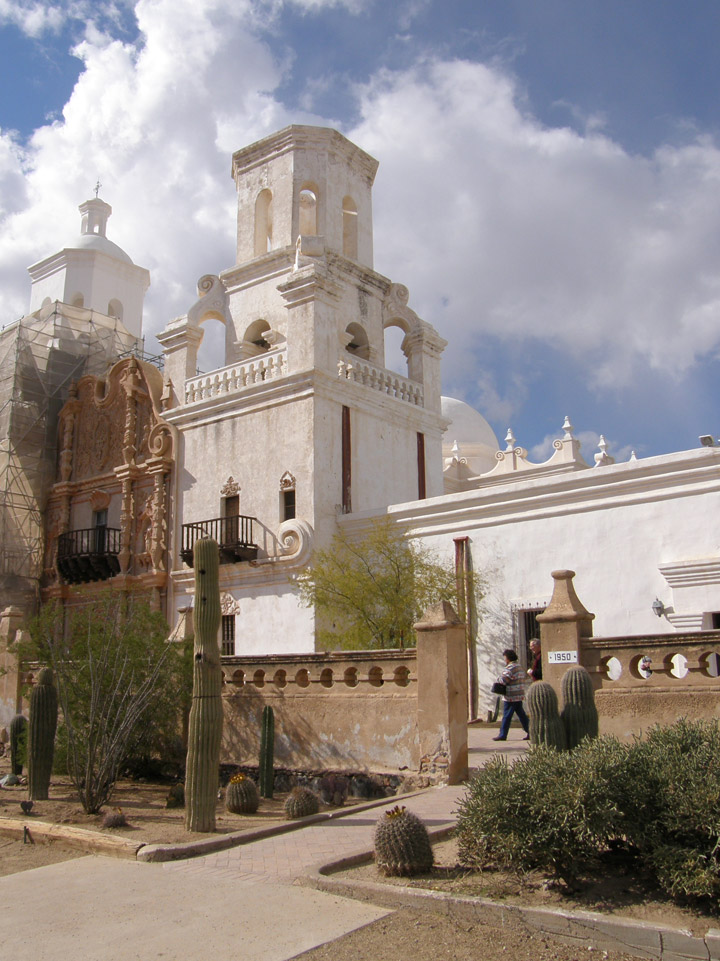
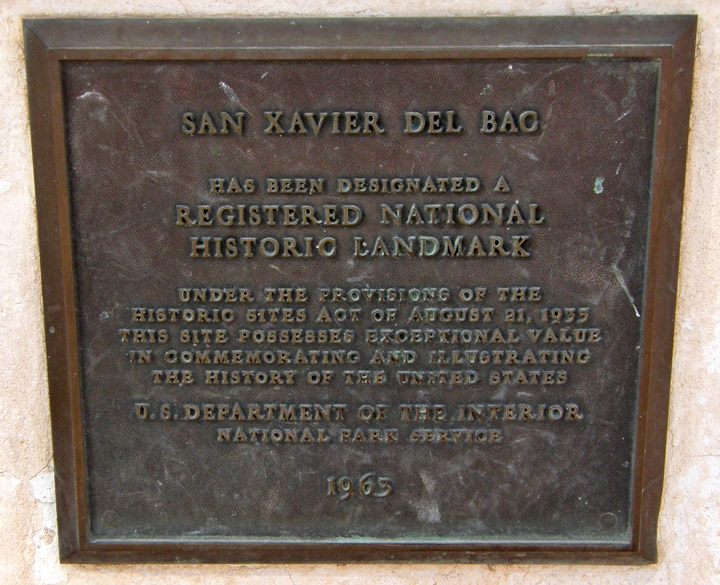
National Historic Landmark
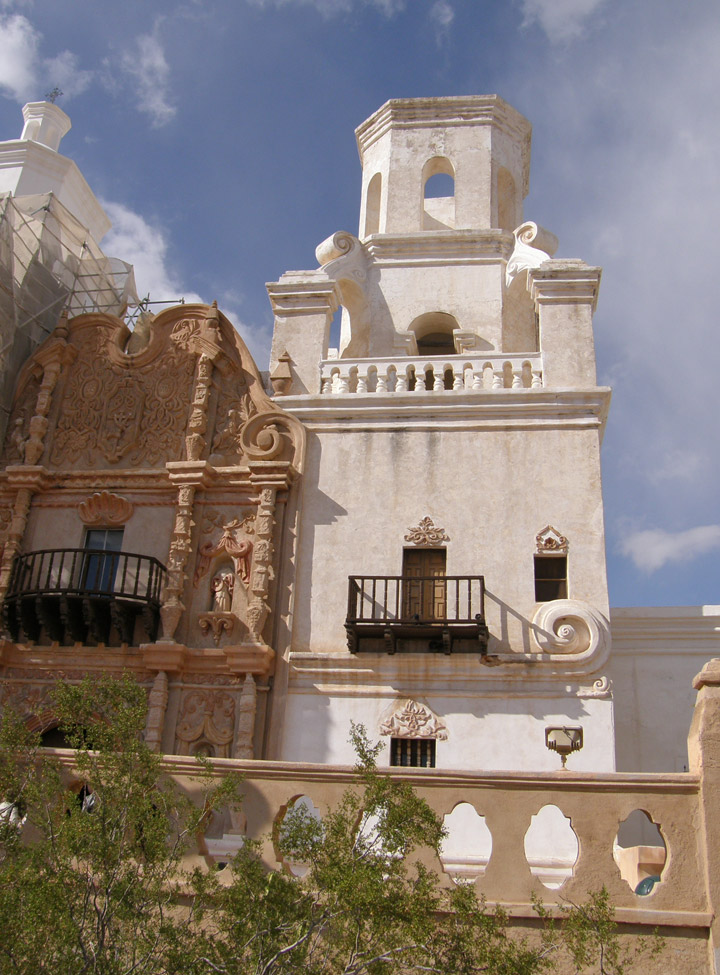
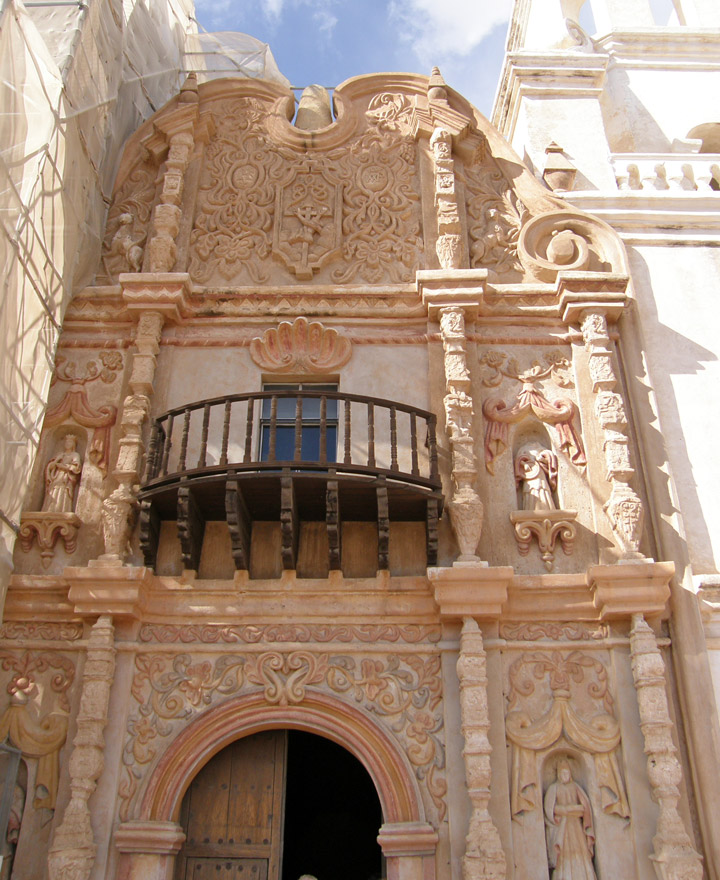
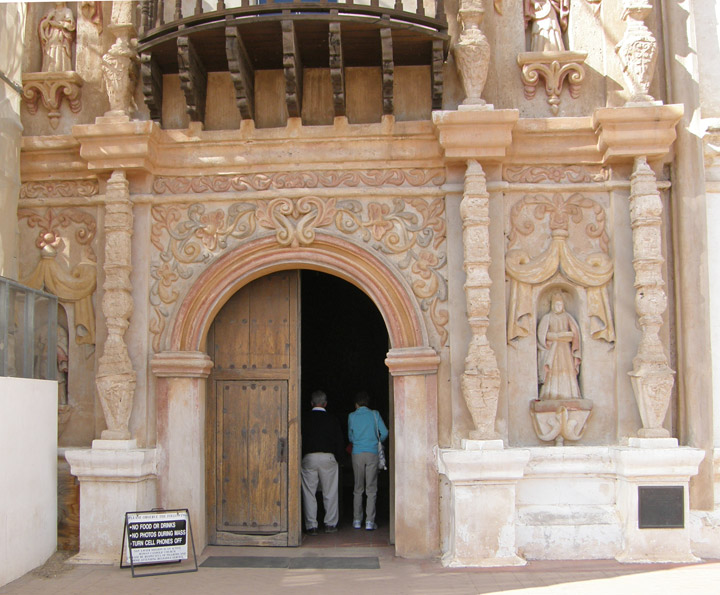
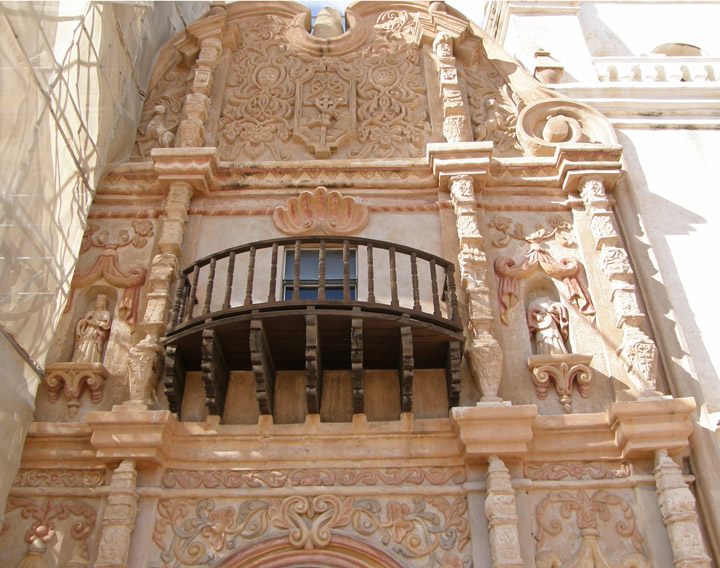


Mission Courtyard
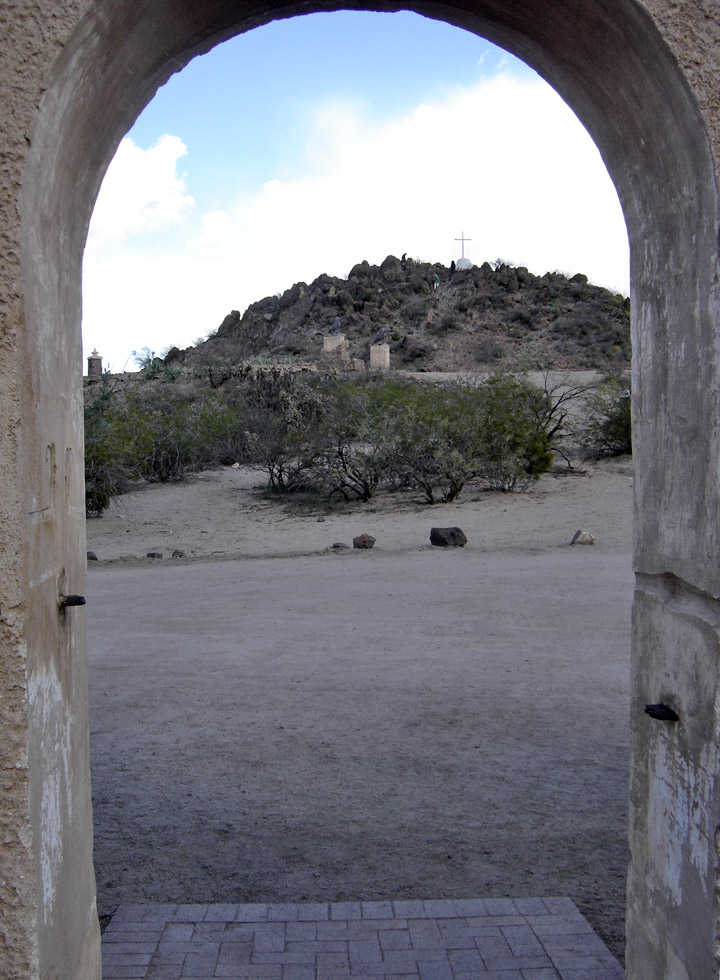
View of the burial hill
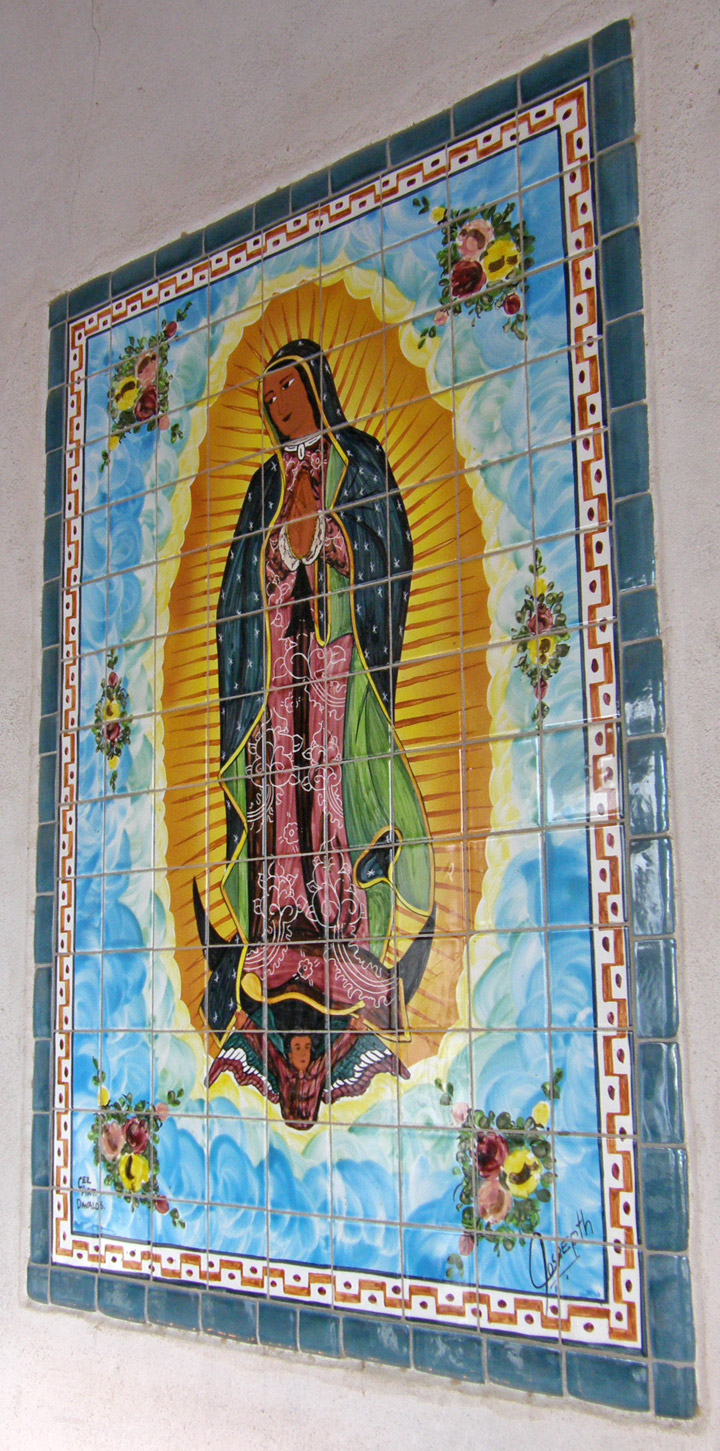
Lady of Guadalupe
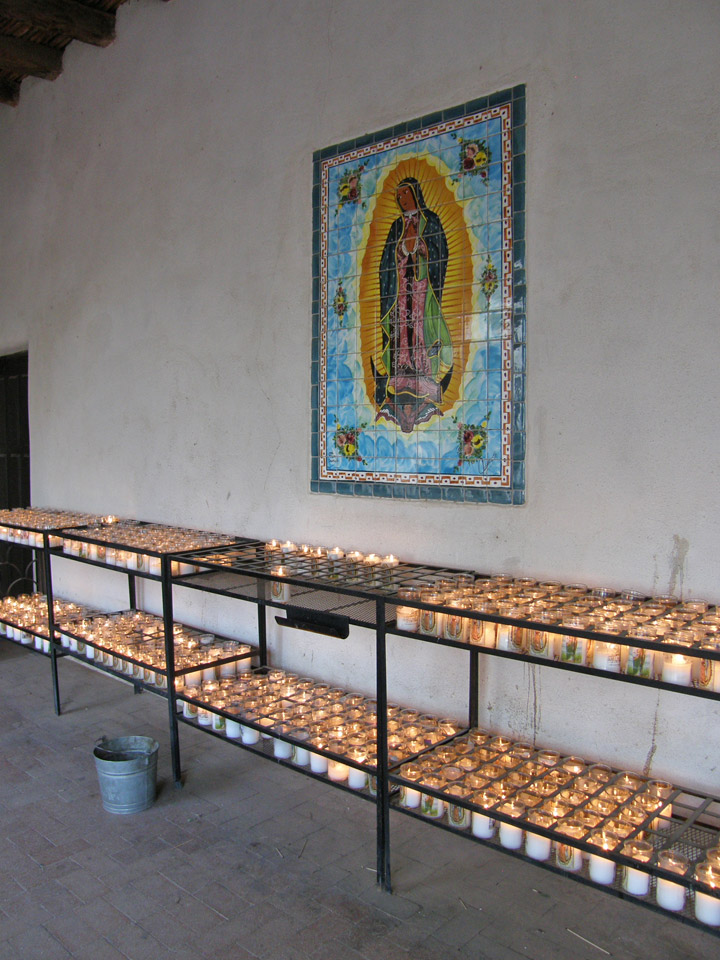
venerated with lighted candles